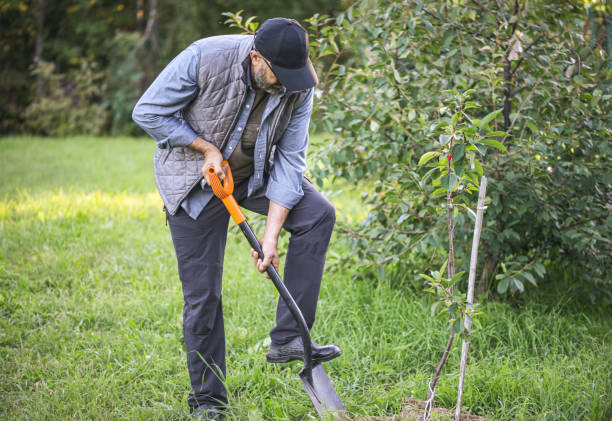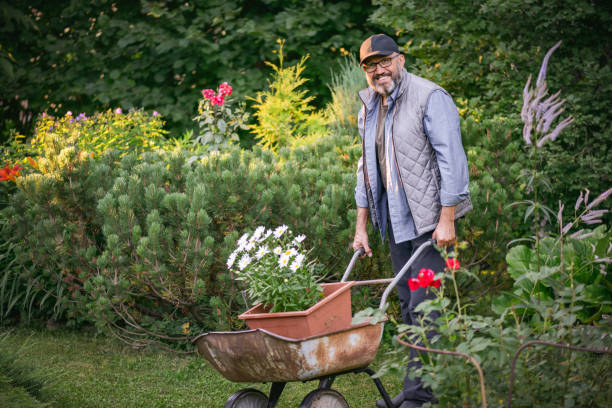In recent years, sustainable landscape design services have gained immense popularity due to environmental awareness. These services focus on creating landscapes that are environmentally friendly, aesthetically pleasing, and resource-efficient. Whether it’s for residential properties or commercial spaces, sustainable landscape designs ensure harmony with nature. This blog explores the core principles and benefits of sustainable landscape design services and their impact on the environment.
What is Sustainable Landscape Design?
Sustainable landscape design incorporates eco-friendly practices to minimize environmental harm and maximize ecological benefits. It emphasizes conserving water, reducing energy consumption, and using native plants. The approach also promotes biodiversity and enhances soil health while reducing maintenance costs. Professionals in this field create outdoor spaces that thrive with minimal human intervention, aligning with natural processes.
Key Principles of Sustainable Landscape Design
- Water Conservation: Efficient water use is a cornerstone of sustainable landscaping, reducing dependency on municipal water supplies.
- Native Plant Selection: Using native plants supports local ecosystems, requiring less water and fewer chemical treatments.
- Soil Health: Maintaining healthy soil ensures plant growth and minimizes the need for synthetic fertilizers.
- Energy Efficiency: Landscape designs incorporate features that reduce energy use, such as shade trees and windbreaks.
- Waste Reduction: Reusing and recycling organic materials like compost enriches the soil and reduces landfill waste.
- Biodiversity Promotion: Creating habitats for birds, bees, and other wildlife fosters ecological balance.
The Benefits of Sustainable Landscape Design Services
Environmental Benefits
Sustainable landscape design reduces carbon footprints by minimizing chemical use and conserving natural resources. Native plants sequester carbon dioxide, improving air quality and mitigating climate change impacts. Water-efficient systems reduce strain on freshwater sources, which are increasingly scarce globally.
Investing in sustainable landscape design services ensures a greener, more beautiful future. By balancing environmental stewardship with functional design, these services make outdoor spaces more enjoyable and sustainable for generations to come.
Economic Advantages
Investing in sustainable landscapes often leads to long-term cost savings. Energy-efficient designs reduce heating and cooling expenses, while drought-tolerant plants lower water bills. Low-maintenance landscaping also minimizes labor and material costs for upkeep.

Aesthetic Appeal
Sustainability doesn’t compromise beauty. Well-designed sustainable landscapes combine form and function, creating visually stunning environments. Native plants and innovative layouts enhance the aesthetic value of properties while supporting ecological health.
Enhanced Property Value
Eco-friendly landscapes increase property appeal, attracting environmentally conscious buyers. Many real estate experts recognize sustainable landscaping as a valuable investment for homeowners and businesses.
Practical Examples of Sustainable Landscape Design
Rain Gardens
Rain gardens are designed to capture and filter rainwater, preventing runoff and promoting groundwater recharge. They often feature native plants that thrive in both wet and dry conditions.
Green Roofs
Green roofs provide insulation, reduce heat islands, and improve urban air quality. They are particularly effective for commercial buildings in densely populated areas.
Permeable Paving
Using permeable materials for pathways and driveways allows water to seep into the ground, reducing stormwater runoff and soil erosion.
Xeriscaping
Xeriscaping involves designing landscapes to thrive in arid climates with minimal water usage. This approach utilizes drought-resistant plants, mulching, and efficient irrigation systems.
How to Choose Sustainable Landscape Design Services
When selecting a service provider, look for professionals with experience in eco-friendly practices. Verify their expertise in using native plants, energy-efficient designs, and water-conserving techniques. Request to see previous projects and ask for client testimonials to ensure quality work.
Sustainable landscape design focuses on creating outdoor spaces that are both environmentally friendly and aesthetically pleasing. These designs prioritize the efficient use of natural resources, minimizing waste, and promoting biodiversity. By employing sustainable practices, landscape designs can reduce environmental impact while enhancing the beauty and functionality of the space.
Key Features of Sustainable Landscape Design
- Water Efficiency: Sustainable designs often incorporate systems like drip irrigation, rainwater harvesting, and drought-tolerant plants to minimize water usage.
- Native Plant Selection: Using local, native plants reduces the need for chemical fertilizers and excessive watering, as these plants are naturally adapted to the climate.
- Soil Health: Healthy soil is the foundation of a sustainable landscape. Practices like composting and mulching enrich the soil, reducing erosion and promoting plant growth.
- Energy Conservation: Incorporating elements like shade trees and windbreaks can help reduce energy costs for nearby buildings by naturally cooling or insulating them.
Benefits of Sustainable Landscape Design Services
- Environmental Impact: Sustainable landscapes improve air and water quality, support wildlife habitats, and reduce carbon footprints.
- Cost Savings: Efficient water usage and energy-saving designs lower utility bills over time.
- Aesthetic Value: These designs create visually appealing spaces that harmonize with the natural environment.
- Long-Term Durability: Sustainable landscapes are designed to thrive over time with minimal maintenance.
Choosing the Right Service Provider
Professional sustainable landscape design services focus on tailored solutions that suit the specific needs of your property. Look for providers with expertise in eco-friendly practices, a portfolio of successful projects, and a commitment to sustainability.
The Role of Technology in Sustainable Landscaping
Modern technology plays a significant role in advancing sustainable landscape design. Smart irrigation systems use sensors to optimize water usage, while drone technology aids in mapping and planning landscapes. Apps and software enable designers to simulate and refine sustainable solutions before implementation. These tools enhance efficiency, ensuring the successful execution of eco-friendly designs.
Challenges in Sustainable Landscape Design
Although beneficial, sustainable landscaping can present challenges such as higher initial costs and limited availability of native plants in some regions. Proper planning and working with experienced professionals can help overcome these obstacles. Education and community engagement are also critical for promoting sustainable practices in landscaping.
The Future of Sustainable Landscape Design
As climate change accelerates, the demand for sustainable landscape design services will continue to grow. Innovations in green technologies and an increased focus on urban sustainability will shape future landscaping trends. More governments and organizations are likely to promote eco-friendly practices through incentives and policies.
Conclusion
Sustainable landscape design services offer a holistic approach to creating eco-friendly, functional, and visually appealing outdoor spaces. By prioritizing water conservation, native plants, and energy efficiency, these designs benefit the environment and property owners alike. As the world embraces sustainability, investing in sustainable landscape design is a step toward a greener and healthier planet.



